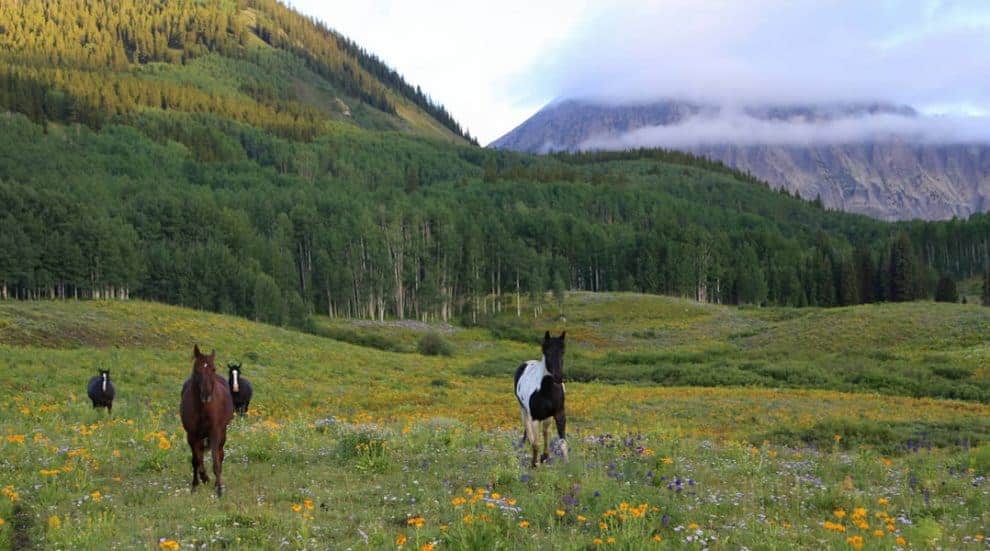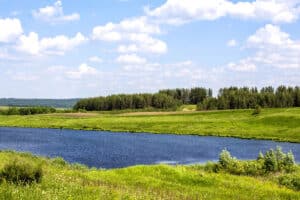“What’s this ranch worth?” seems like a simple enough question, but in reality, valuing one-of-a-kind legacy ranches¹ can be one of the trickier propositions in real estate. Each legacy ranch is unique, there’s a low volume of comparable transactions, they rarely generate significant cash flow relative to value, and emotion plays a notoriously large role in many transactions. By any standard, it’s an inefficient, fragmented market.
The ability to accurately value a ranch property despite inherent market inefficiencies is one of the most important, yet most poorly executed, aspects of a ranch broker’s job. Truly understanding valuation allows skilled brokers to identify opportunities for their clients and also steer them away from mispriced ranches that could prove to be horrible investments.
Simply put, brokers must fully understand land values in the areas where they represent landowners or buyers. This seems like a mind-numbingly obvious statement, but in my experience, it can be surprisingly uncommon to find brokers who can back up their value claims with quantifiable data or a well-reasoned argument. Common phrases I hear are “It’s worth $X, because that’s what I think it’s worth,” or “That’s what it was worth when I bought it back in ’06.” Well, if you insist it’s currently worth $X, but I have a spreadsheet of hard data suggesting otherwise, I’ll trust my data over unfounded, emotional hunches; I have a fiduciary responsibility to my client to do so.
Ranches, like any asset, can be valued using a variety of systems and models. Is any system for valuing ranches perfect? No. Is a system based on hard data, proven and accepted valuation methods, and well-reasoned logic better than pulling numbers out of the sky? Absolutely. Whether valuing a business, a vehicle, livestock, fine art, or a legacy ranch, all legitimate valuation models are based on quantifiable data and reasonable assumptions.
In the case of ranches, quantifiable data means comparable ranch sales information. Unlike the residential and commercial real estate markets, there is no central database of ranch sales and the number of comparable sales is low, so ranch brokers must work with appraisers, bankers, county offices, and other landowners to uncover useful sales information. Because of the unique nature of legacy ranches, uncovering relevant data can be a lengthy and time-consuming process. However, it is imperative to perform this research thoroughly, because this all-important data can mean the difference of millions of dollars for buyers or landowners.
When forming reasonable assumptions about the legacy ranch market, brokers must combine all relevant data with their experience and knowledge to make a well-informed prediction of where the ranch market is going. Will prices continue to increase or are we at the market’s peak? Will livestock price trends help or hurt the value of this ranch? How will government policy or potential administration changes affect ranch prices? Are there any impending local/national/global economic issues that may impact a ranch’s value? What value does a recreational attribute, such as miles of private fishing or trophy elk, add to the property?
The reality is that no one knows the answer to these questions with 100% certainty – if someone actually did, he or she definitely would not tell anyone! However, an experienced and educated broker understands all of the moving parts, and how these parts will collectively influence the value of ranch real estate. The alternative to making data-based assumptions is to predict future market conditions based on emotion, hopes, or desires. Basing a purchase on hope may be a great strategy when buying lottery tickets, but it’s an extremely unwise approach when dealing with multi-million dollar assets such as legacy ranches.
A note on emotion as it relates to valuation: There’s no way around it, ranches evoke emotion from landowners, buyers, and all other stakeholders. Whether it’s a sixth-generation rancher whose family homesteaded the land 150 years ago or an East Coast family looking for a Western vacation retreat, it’s the emotional connection to the landscapes that attracts people to ranch real estate. As I see it, a broker’s job is to be the non-emotional counterweight to a buyer’s or landowner’s (justifiably) emotional point of view. It’s not that brokers should be robot-like bean counters who only see properties from a “dollars and cents” perspective, but they should strive to balance their clients’ emotions with the hard financial realities of the ranch market. Ultimately, a ranch is both an asset and an investment, and no one wants to invest poorly or irresponsibly because they were temporarily blinded by emotion.
In closing, a quick rule of thumb: When quoted a ranch listing price, the most revealing and straightforward question to ask is: “Why?” Again, mind-numbingly simple, but remarkably effective. If there’s no concrete answer based on quantifiable data and reasonable assumptions, take note. More times than not, the ranch will be overpriced. However, every so often a ranch is priced below market value due to the owner or broker’s ignorance of market conditions, which creates an attractive opportunity. In either case, having a thorough understanding of ranch values provides a distinct negotiating advantage and helps to ensure a solid and responsible ranch investment.
Written by (photo credit to) Ed Roberson, a Colorado-based ranch broker and land conservation consultant who has worked extensively throughout the Rocky Mountain West. To learn more, visit his blog www.mountainandprairie.com.
¹ For the purposes of this article, “legacy ranches” can be defined as unique ranch properties that have value above and beyond traditional agriculture, including fishing, hunting, general recreation, conservation, and/or development.
This content may not be used or reproduced in any manner whatsoever, in part or in whole, without written permission of LANDTHINK. Use of this content without permission is a violation of federal copyright law. The articles, posts, comments, opinions and information provided by LANDTHINK are for informational and research purposes only and DOES NOT substitute or coincide with the advice of an attorney, accountant, real estate broker or any other licensed real estate professional. LANDTHINK strongly advises visitors and readers to seek their own professional guidance and advice related to buying, investing in or selling real estate.










Thanks for sharing these insights Ed. This is a well-reasoned approach to the very difficult task of valuing unique properties.
Yes I’m prepared to live off the grid, but finding some property is the challenge? Some where in the western Mts. would be ideal.
I look at property in one way. Land value first. Land as raw land does not rise at ridicously high prices. Normally they are consistent over time as decades. What makes raw land increase is the rate of taxes imposed on that raw land. Then the owner wants to pass on those increases on to the new buyer. But unless something of substantial is on that land or under that land that he knows about then it may or may not cause the increase. Structural buildings cause increase on land. Equipment that go with the land do not. That is considered part of the purchase that can or can not be negotiated based on age and time of life. Some Realtors or Brokers just add the price of a new equipment to the sales prices. Walk or ride looking for issues that I bring up in negotiations that decrease the purchase price. As if I am going to buy it is either fixed to the standards prevailing today is signed by the person or company or fixed it or it is reduced in the purchase price. I do the same on equipment and age of buildings. Just because a new home and barn cost $x doesn’t mean yours does. Age decreases value as the plumbing is different electrical wiring is different and building standards period were different. That’s how I would value the land when I purchase or list the porperty. I would have a fight because they see high dollar signs. But if you have intelligent buyers they know what they are talking about. So educate your sellers.